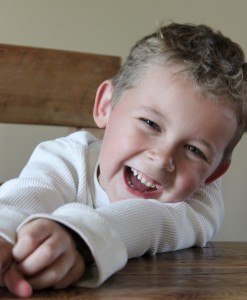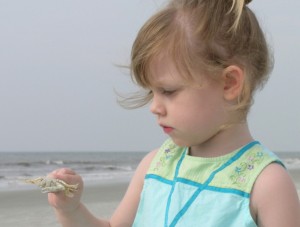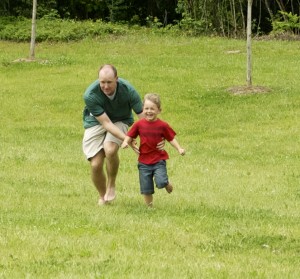 Many moms and dads have heard of the “Yes” environment before; it’s popular advice for parents of babies and toddlers. When infants become mobile, we are advised to create an environment for them that is free of “No”s. We baby proof everything; put small and dangerous objects out of reach, cover up safety hazards, lock the cabinets, install gates, secure furniture to the wall, pad the sharp edges of tables and fireplace mantles, and put any and all valuables and destructive items safely away. We look for every opportunity to say “No,” to tell our babies that they need to stay away from something or to put something down, and we turn those “No”s into “Yes”es. This is a Yes Environment.
Many moms and dads have heard of the “Yes” environment before; it’s popular advice for parents of babies and toddlers. When infants become mobile, we are advised to create an environment for them that is free of “No”s. We baby proof everything; put small and dangerous objects out of reach, cover up safety hazards, lock the cabinets, install gates, secure furniture to the wall, pad the sharp edges of tables and fireplace mantles, and put any and all valuables and destructive items safely away. We look for every opportunity to say “No,” to tell our babies that they need to stay away from something or to put something down, and we turn those “No”s into “Yes”es. This is a Yes Environment.
It is fantastic for our homes, but what about when we’re other places? We can take the principles of the Yes Environment and apply them to other situations. Here’s another perspective:
One mom’s 2-year-old son repeatedly throws his toy car on the ground as he rides in the cart at the grocery store, not because he is angry or upset, but simply because he thinks it is great fun. This mom says, “If I take it away because I need to grocery shop, isn’t that a punishment?”
What she is doing by holding onto the car is creating a yes environment while she shops. That is the best thing she can do to help her son succeed in not throwing his car.
When she is getting annoyed at constantly stopping to get the car (which is very valid), she can simply pick it up and put it in her bag without a word. If the toddler notices that she doesn’t give it back to him and he asks about it, she can tell him, “The car keeps falling down, so I’m going to hold it for now.” She’s not blaming or shaming him by telling him it’s his own fault he doesn’t have the car, or that “this is what happens when you act this way.” Just solving a temporary problem to get the shopping done smoothly.
Creating a yes environment is about setting a child up for success; about removing obstacles to success. In accompanying his mom through the grocery store, the obstacle to the little boy’s success is the entire combination of: the toy, his age, the setting, his need to experience things (here, the emotional, cognitive, and physical experience of repeatedly throwing the car down), and his complete lack of impulse control. By removing the car from that combination of factors, it’s not that she is “taking the car away”, so much as “eliminating an obstacle.” She is creating the opportunity for him to be successful. It’s a yes environment in the grocery cart.
Understanding this principle allows parents to use the yes environment tool in a variety of situations for kids of all ages. Removing obstacles to success is more effective than expecting children to navigate around obstacles when they are not developmentally capable of doing so.
A mom dashes to meet her preschooler and hold his hand as he nears the street…she’s created a yes environment. (The obstacle is the lack of safe guidance in the street. He is not capable of making thoughtful decisions about going in the street.)
A teacher rearranges her seating chart to separate talkative students…it’s a yes environment. (The obstacle is the distraction of fun, chatty friends nearby. They are not capable of controlling their impulse to talk to their friends.)
A dad clears the floor as his daughter launches into a sommersault…yes environment. (The obstacles are, well…the obstacles that are literally in her way. She’s not capable of maneuvering her body around them.)
A yes environment is a fantastic positive parenting tool at any age because it is proactive. It tells children, “I’m going to help you be successful with this.”
Today, let’s look for more ways to create yes environments for our kids. Even if they may not be toddlers anymore and we don’t need to baby proof their physical environment, we can still remove obstacles to their success. We can look for ways to turn “No”s into “Yes”es. We can help our kids be successful until they’re capable of doing it on their own.

 Children learn about death from many sources, but they learn about grieving from the people they love most.
Children learn about death from many sources, but they learn about grieving from the people they love most.
